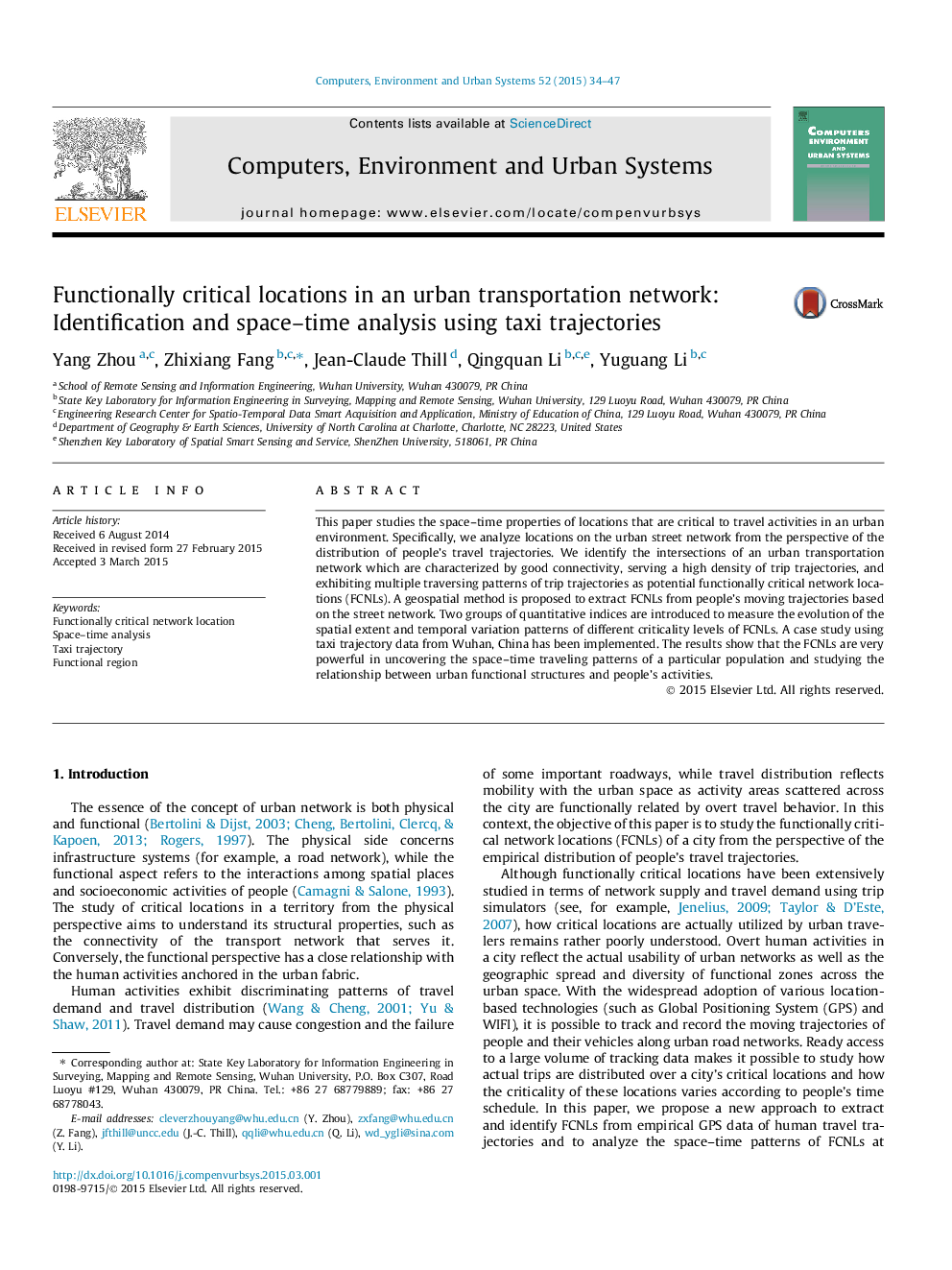| Article ID | Journal | Published Year | Pages | File Type |
|---|---|---|---|---|
| 6921968 | Computers, Environment and Urban Systems | 2015 | 14 Pages |
Abstract
This paper studies the space-time properties of locations that are critical to travel activities in an urban environment. Specifically, we analyze locations on the urban street network from the perspective of the distribution of people's travel trajectories. We identify the intersections of an urban transportation network which are characterized by good connectivity, serving a high density of trip trajectories, and exhibiting multiple traversing patterns of trip trajectories as potential functionally critical network locations (FCNLs). A geospatial method is proposed to extract FCNLs from people's moving trajectories based on the street network. Two groups of quantitative indices are introduced to measure the evolution of the spatial extent and temporal variation patterns of different criticality levels of FCNLs. A case study using taxi trajectory data from Wuhan, China has been implemented. The results show that the FCNLs are very powerful in uncovering the space-time traveling patterns of a particular population and studying the relationship between urban functional structures and people's activities.
Keywords
Related Topics
Physical Sciences and Engineering
Computer Science
Computer Science Applications
Authors
Yang Zhou, Zhixiang Fang, Jean-Claude Thill, Qingquan Li, Yuguang Li,
